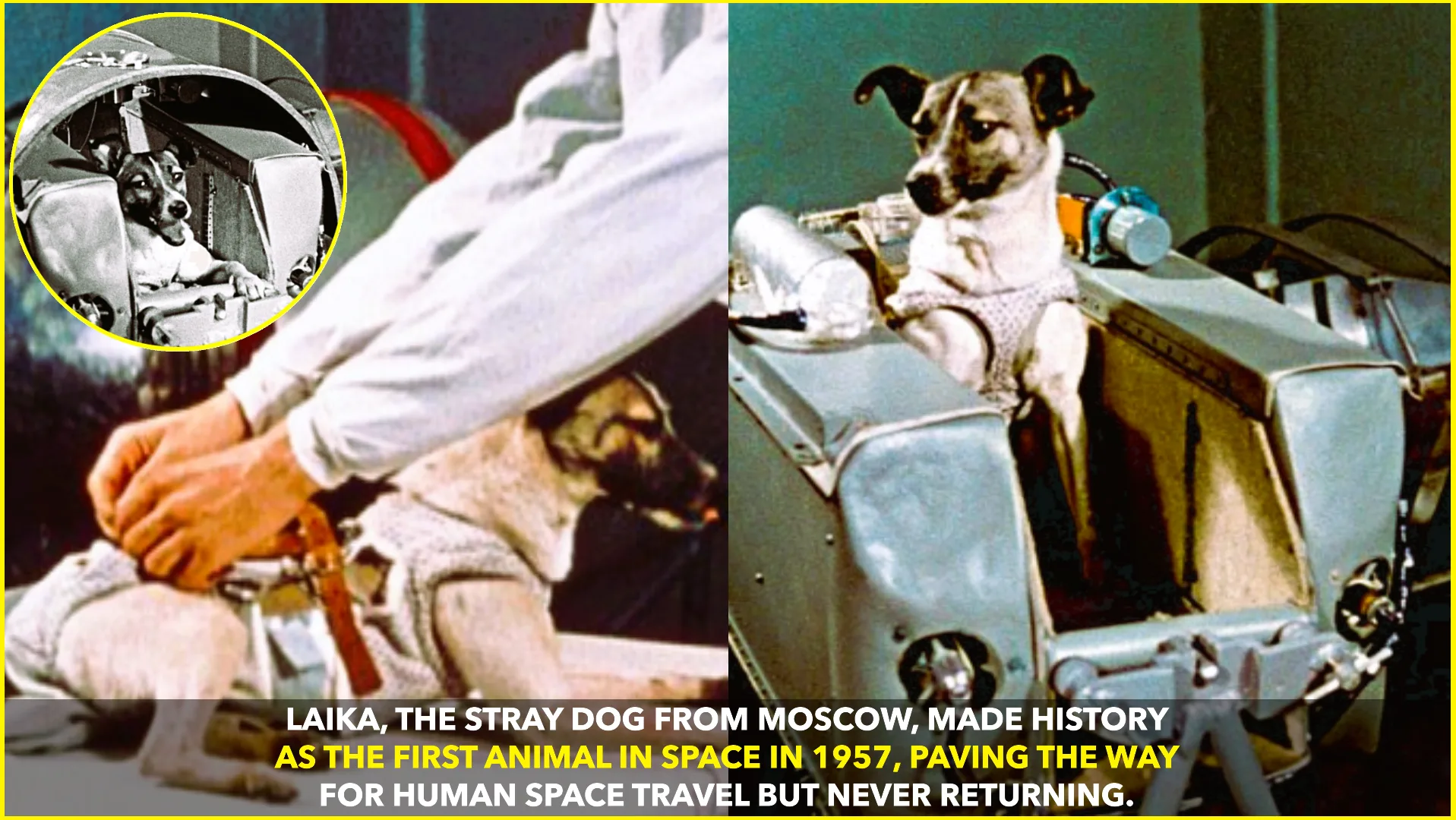In November 1957, just weeks after launching the first artificial satellite, Sputnik 1, the Soviet Union made history once again by sending the first living creature into space. That pioneering traveler was not a human, but a stray dog from Moscow named Laika. Her journey aboard Sputnik 2 captured the world’s imagination and became one of the most defining moments in the early years of space exploration.
Laika’s story is both inspiring and tragic. Selected from the streets of Moscow for her resilience, small size, and calm nature, Laika was trained rigorously for the mission. Scientists believed that if a living creature could survive the extreme conditions of space, it would prove that humans could follow. At that time, the race between the United States and the Soviet Union to dominate space was at its peak, and sending an animal was a crucial test before risking human lives.
Sputnik 2 was launched on November 3, 1957. The spacecraft was equipped with a pressurized cabin, food, oxygen, and waste collection systems. However, what it lacked was the technology to return safely to Earth. This meant that Laika’s mission was never intended to bring her back home. While this fact was not widely known at the time, it later raised ethical concerns around the world.
During the launch, Laika endured tremendous stress as the rocket blasted off. Reports later revealed that within hours of being in orbit, she succumbed to overheating and panic caused by a failure in the cooling system. For many years, the Soviet Union kept the true details of her death vague, suggesting she had lived for days. It wasn’t until decades later that the truth was officially confirmed.
Laika’s sacrifice was not in vain. Her mission provided scientists with invaluable information about how living organisms react to the conditions of space, including weightlessness, confined spaces, and rapid changes in temperature and pressure. These findings laid the groundwork for future human spaceflight, leading eventually to Yuri Gagarin’s historic journey in 1961 as the first human to orbit the Earth.
Around the globe, Laika’s story touched hearts and sparked emotional debates. Many people hailed her as a hero, a symbol of courage who helped humanity take its first steps into the cosmos. Others mourned her as a victim of scientific ambition, arguing that the mission reflected the harsh realities of the Cold War space race and raised questions about animal testing in research.
Over time, the Soviet Union itself acknowledged her contribution more openly. Statues, plaques, and monuments have been erected in her memory, including a famous statue near the military research facility in Moscow where she was trained. Today, Laika’s legacy is remembered as both a scientific breakthrough and a reminder of the moral costs of exploration.
Her story continues to be taught as part of space history, symbolizing the bravery and sacrifice required in the pursuit of progress. While Laika never returned to Earth, she occupies a permanent place in human memory and space lore. Every time astronauts launch safely into space, it is worth remembering that a small stray dog helped make it possible.
Laika’s mission pushed scientists to design safer spacecraft, with life-support systems and re-entry technology that would later ensure human astronauts could return alive. In this sense, her short life changed the course of space exploration forever.
Even today, more than six decades later, Laika remains a name that evokes awe, sadness, and respect. She was not just a dog from Moscow—she was the world’s first space traveler, a pioneer whose story will never be forgotten.










